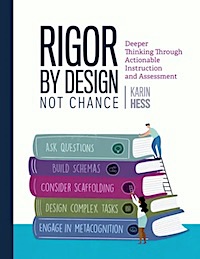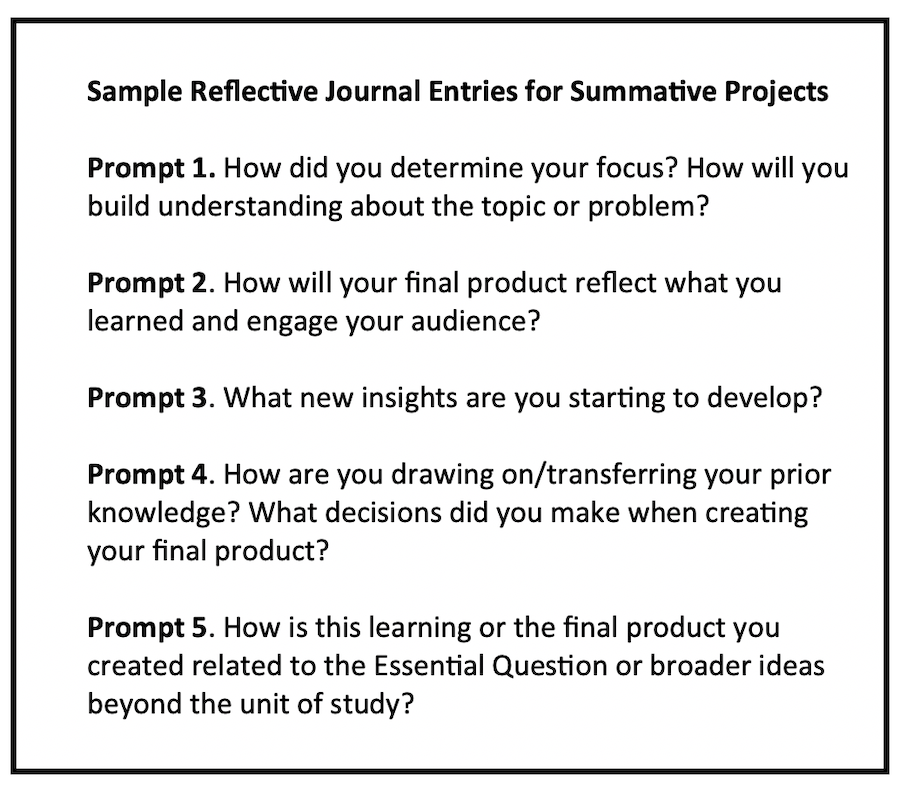5 Metacognitive Tools to Reveal Hidden Learning
By Karin Hess
 The words metacognition and reflection are often used interchangeably. Although they’re interrelated, they’re not the same.
The words metacognition and reflection are often used interchangeably. Although they’re interrelated, they’re not the same.
Metacognition happens “in the moment” during learning; reflection is the act of looking back on past learning, determining the meaning of what was learned; building (or not building) confidence as a learner; and carrying that mindset forward.
Deep learning engages students in metacognition and reflection activities – not as an afterthought, but crucial to students building independence as learners (Hess, 2023).
Metacognitive skills help learners to stay focused and monitor progress during learning.
Peer and self-reflection activities help learners identify their strengths and challenges and also evaluate achievement of personal goals for learning.
How do we assess metacognition?
Teachers sometimes assess metacognition through direct observation and conferencing. However, the most powerful assessment is when students can attend closely to their own learning, knowing what evidence to look for – evidence that tells them they’re making progress and helps them decide how best to move forward.
In other words, metacognitive students understand that they’re on a learning path and that they’re in some control of where that path leads.
Student-led conferences and portfolio defenses can be powerful self-reflection opportunities to use at the end of a school year.
But if you’re short on time, here are variations on five metacognitive activities that require minimal upfront planning, and unlike many other assessments, are personally relevant to each student, uncovering learning that probably has not been formally assessed.
(I’ve included downloadable PDFs from my own work in several places here.)
1. Create “Actionable” Feedback Stems Using Rubric Language
If the objective of giving feedback is to help someone reflect on and improve performance, then it’s important to teach and model for students the difference between telling someone what is wrong and providing descriptive feedback in relation to success criteria.
Feedback is “actionable” when it targets something specific, guiding the learner to reflect on whether to keep the work as is or to do something that will improve the quality. Feedback stems can guide peers in using descriptive language, targeting specific examples related to rubric success criteria (e.g., clarity, format, accuracy) throughout the year in any content area or designed as self-reflection stems for specific projects.
2. Random Roll of the Feedback Dice
When students critique or give feedback on the work of their peers, they naturally have to reflect on what they know, using an understanding of the related success criteria. This quick strategy uses a cube with different questions on each side. Either the teacher or small groups roll the die to see what the focus of the peer feedback will be.

● Are calculations, labels, and terms accurate? Explain how you decided.
● Is the graph, table, or diagram accurate, complete, and useful in showing the math relationships in the problem? Explain how you know.
● Does the reasoning explain how the calculations, representations, and strategy used all support the final solution? Explain how you know.
● Is a related mathematical connection made between the problem and a math concept or real-world application? Explain how you decided.
● Is there an error? Explain how you know, or how you would correct it and why.
● Does the answer make sense? Explain how you know.
● What good idea in this work can you apply in yours?
3. The Six-Word Memoir or Story
Students use only six words or phrases to introduce themselves or describe a “mystery” person or story character; to summarize a story line, historical event, or science procedure; or to reflect on memorable events. Each word is then illustrated with either a still picture or short video clip.
Six sticky notes or a storyboarding template can be used to plan how the visuals will be matched with each of the six words, using a prompt such as “6 important things I learned this year.” Teachers can introduce the six-word strategy turning down the sound of a TV commercial as inspiration for using 6 words to tell a concise story in less than 60 seconds.
4. Investigations with Interactive Checkpoints
Student investigations with Interactive checkpoints create an ongoing dialogue between the learner(s) and those giving feedback. For example, with a multi-step science investigation, break the task into smaller parts, inserting checkpoints along the way.
After completing each part, students receive feedback or guiding questions that help them determine whether they are ready to move on or need to rethink their approach before starting the next part. Checkpoint feedback can be elicited between peer groups or with informal student-teacher conferencing using a few quick notes that reference rubric success criteria.
5. Reflective Journaling
Reflective Journaling provides ongoing dialogic opportunities between students and teachers about progress made on specific projects or as a means to build a more collaborative classroom environment. Journal entries are not assignments for the teacher to grade, but for learners to uncover and selectively share their thinking.
For summative projects, reflective journal entries can communicate how a learner is or isn’t making sense of the content or share feelings about the learning activity. Students can describe things that confuse them, use sketchnotes to visually plan or connect ideas, or explain rationales for decisions made during product development.
At the end of a project, students can draw upon journal entries that have captured their thinking in the moment to create a reflective essay. Be sure to remind students to date each entry in case they want to reference it later on.
Also see Karin Hess’s popular MiddleWeb articles:
Six Ways to Add Rigor by Deepening Thinking
How to Be Strategic with Scaffolding Strategies
To Sum Up
Peer feedback and reflection strategies are useful in deepening engagement and driving learning forward. Some strategies target multi-day performance assessments and projects, whereas others can be embedded into any lesson.
The bottom line is that “metacognition breeds agency. Students who are practicing reflection, goal setting, and then monitoring and adapting their actions based on an ongoing reflection process begin to take ownership in a way that exemplifies an empowered learner” (Vander Els & Stack, 2022).
References
Hess (2023). Rigor by Design, Not Chance. ASCD.
Vander Els & Stack. (2022). Unpacking the Competency-Based Classroom. Solution Tree.

She is recognized internationally as a leader in applying cognitive rigor, depth of knowledge (DOK), and learning progressions to the development of state and school-based curriculum and assessment systems. She can be contacted through her website www.karin-hess.com.
































